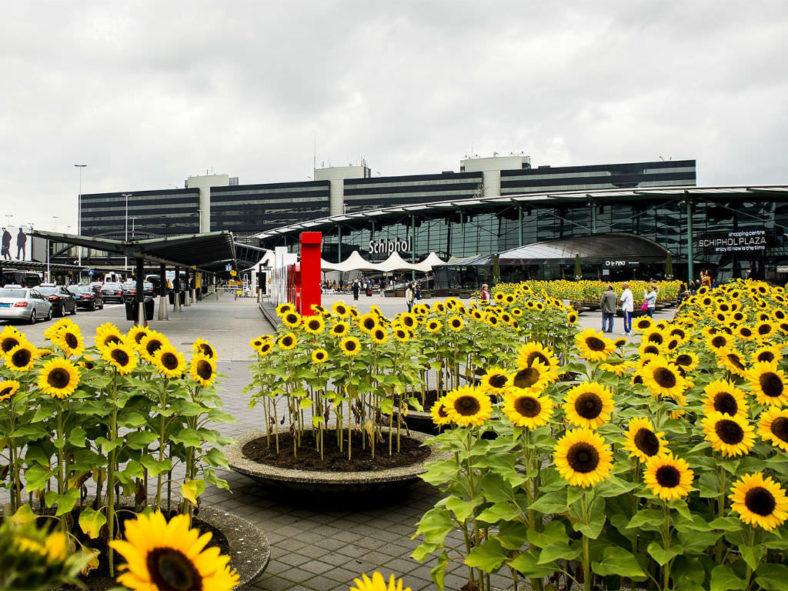Ten-foot giant Sunflowers (Helianthus annuus) can be grown in plant containers (even in small 3-gallon nursery pots). Of course, these beautiful native American flowers must be planted in full sun, or they can topple over while trying to reach the sun. But growing these beauties in your balcony container garden will attract attention from the people in your neighborhood and a lot of wildlife. The Sunflower's floret patterns (which eventually turn into seeds) are displayed in an amazing spiral pattern on the circular flower head. In addition to making a beautiful flower display, this ensures that most seeds are as crammed into the Sunflower's flower head as possible.
Sunflowers bloom from mid-summer to early fall, and their flower heads are heliotropic, meaning they follow the sun across the sky. But once the Sunflower plant's stem stiffens and becomes woody (around the time of its bloom), the flower stops following the sun. Although most Sunflowers grow to about 10 feet (3 m), the tallest Sunflower grows to 40 feet (12 m). After planting seeds, expect Sunflowers to be full-grown and bloom within about three months. Sunflowers attract wild birds, butterflies, and beneficial insects to the balcony garden.

Growing Conditions and General Care
Light: Sunflowers need full sun for 6 to 8 hours each day.
Water: When it comes to watering the Sunflower plant, add one inch of water per week. Compensate if the potting soil dries out from heat or sun.
Fertilizer: Fertilize your Sunflowers regularly with a high-nitrogen liquid plant fertilizer. When a flower head begins to form, switch to a liquid fertilizer with more phosphorous to promote a more spectacular Sunflower bloom.
Temperature: The Sunflower is an annual plant, so you do not need to worry about overwintering this plant indoors. The most important thing to remember with Sunflowers and temperature is not to plant them outdoors until the last frost has passed. If you experience a very hot, dry day, make sure to give extra water to your Sunflower, so it does not dry out too much and die.
Pests and Diseases
While Sunflower plants are generally very healthy and immune to common garden pests and diseases, you will find wild birds and squirrels snacking on Sunflower seeds. When you harvest the giant Sunflower heads, keep them in an area where animals cannot eat the seeds. You may want to leave the heads on the stalk to attract birds to your garden.
Propagation
Collect seeds after allowing the Sunflower to completely dry out (but beware, the flowers won't look very appealing at this point). Then cut the Sunflower head off and hang it upside down until the seeds dry out. Eat the Sunflower seeds yourself, feed them to wild birds, or save them for the next gardening season. Plant Sunflower seeds 1 inch (2.5 cm) deep into the potting soil, and they should germinate within 5 to 10 days.
Source: balconycontainergardening.com
Links
- Back to genus Helianthus
- Plantpedia: Browse flowering plants by Scientific Name, Common Name, Genus, Family, USDA Hardiness Zone, or Origin

